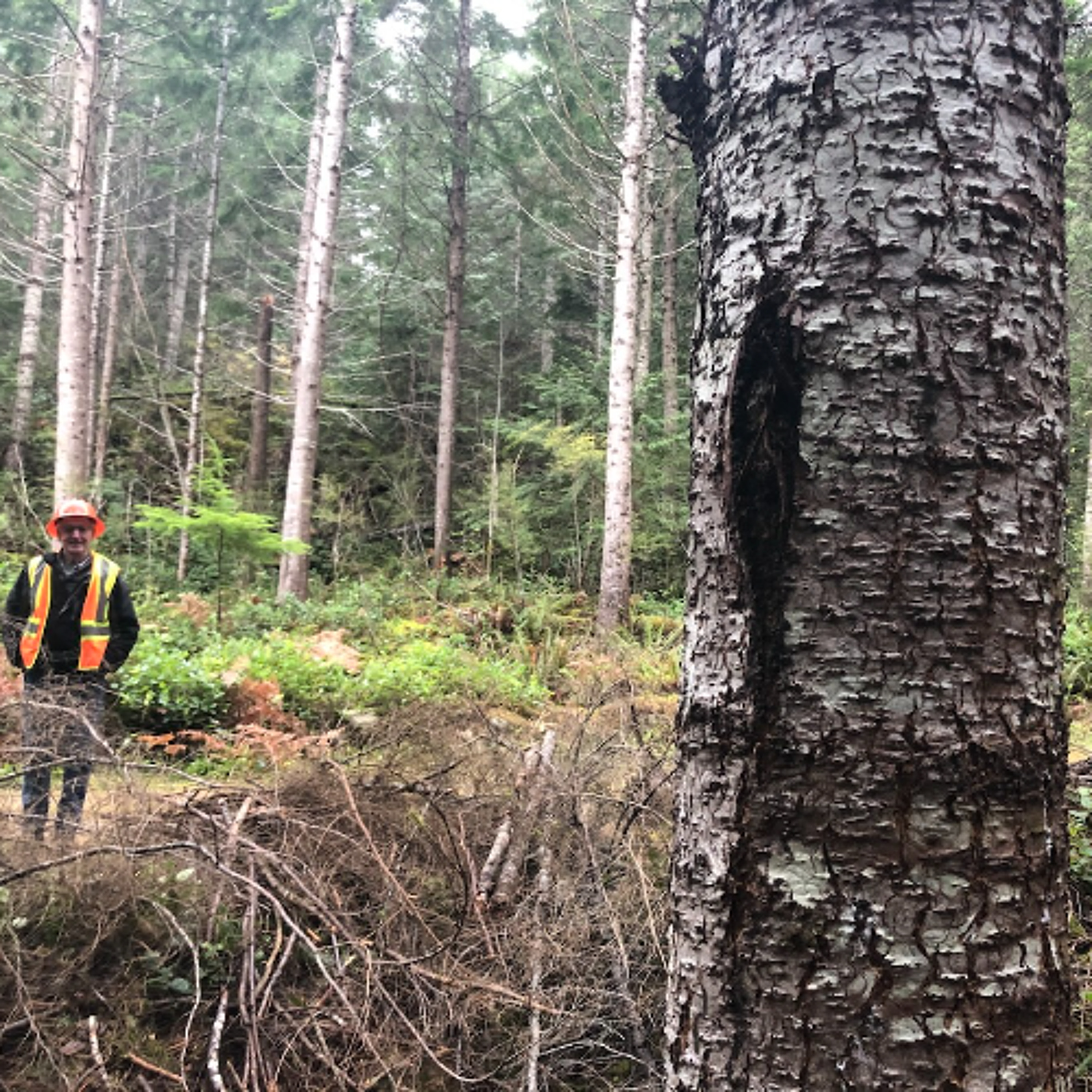Wildfire Mitigation in Squirrel Cove
- Author
- roy.hales9.gmail.com
- Published
- Tue 03 Dec 2024
- Episode Link
- https://soundcloud.com/the-ecoreport/wildfire-mitigation-in
Roy L Hales/COrtes Currents - There's a wildfire mitigation operation underway in the Community Forest near Squirrel Cove.
"This is something that we've been working on since 2018. It was identified as a priority in the 2020 Community Wildfire Protection Plan. We received funding for a prescription, then we got funding to do an archaeological assessment, as required by law in the Tla'amin First Nation and then this year we obtained funding through the Forest Enhancement Society of BC to actually do the work. I'm just really excited to see it happening because when you see an overgrown plantation like this, it feels really good to be able to reinvest in the land base to leave a better forest for the future generation and reduce the wildfire risk in this neighbourhood," explained to Mark Lombard, General Manager of the Cortes Forestry General Partnership.
Cortes Currents: How big of an area are we talking about?
Mark Lombard: "This project is 6.5 hectares and then the Coulter Bay project is 9.8 hectares. So a total of 16.3 hectares this year, out of 3,800 hectares in the Community Forest. So it's just a drop in the bucket really, but they're in neighbourhoods.”
Bruce Ellingsen, a founding Director and thought leader of the Cortes Community Forest movement, added, "One of the justifications for mitigating the possibility of wildfire is because of the adjacency to neighbourhoods and other residences."
Mark Lombard: "Your residential neighborhood in Squirrel Cove is all uphill from here."
Bruce Ellingsen: "That's the way fires go, it's uphill usually."
The Cortes Forestry General Partnership's first cutblocks were in Larsens Meadow during 2015. They started working in Squirrel Cove the following year.
Bruce Ellingsen: "It's the intention of the partnership to cut below the annual incremental growth of the whole forest on the Community Forest land base so that it gradually ages while we're still cutting a modest amount.
Over time, they intend to harvest increasingly larger trees that are much more efficiently processed by Cortes Island’s local mills.
We met at the gate, outside of the remediation area.
Mark Lombard: "The hemlock are almost all dying out here. This stand was 'space improved' 20 years ago. They would have left a little bit of hemlock, and we're seeing it die out. There's one hemlock there and one hemlock there, they're both dead. There's another one right there that's broken off."
"The stand that we're working in is maybe 10 years younger and it hasn't been spaced and pruned. It's really overgrown. The fir are not doing as well as in this plantation. We're forced to leave a little bit more balsam and a little bit more hemlock and certainly we're trying to leave cedars wherever we can because it's hard to grow cedars. It's nice to see the cedars doing well, but the balsam has a beetle in them so it's a real balancing act of trying to leave a decent stock knowing that quite a few of the trees we're going to leave are probably going to die just like these ones. We just don't want to leave a whole bunch of stuff in our wildfire risk reduction project that is going to be dead in 10 years or 20 years.”
